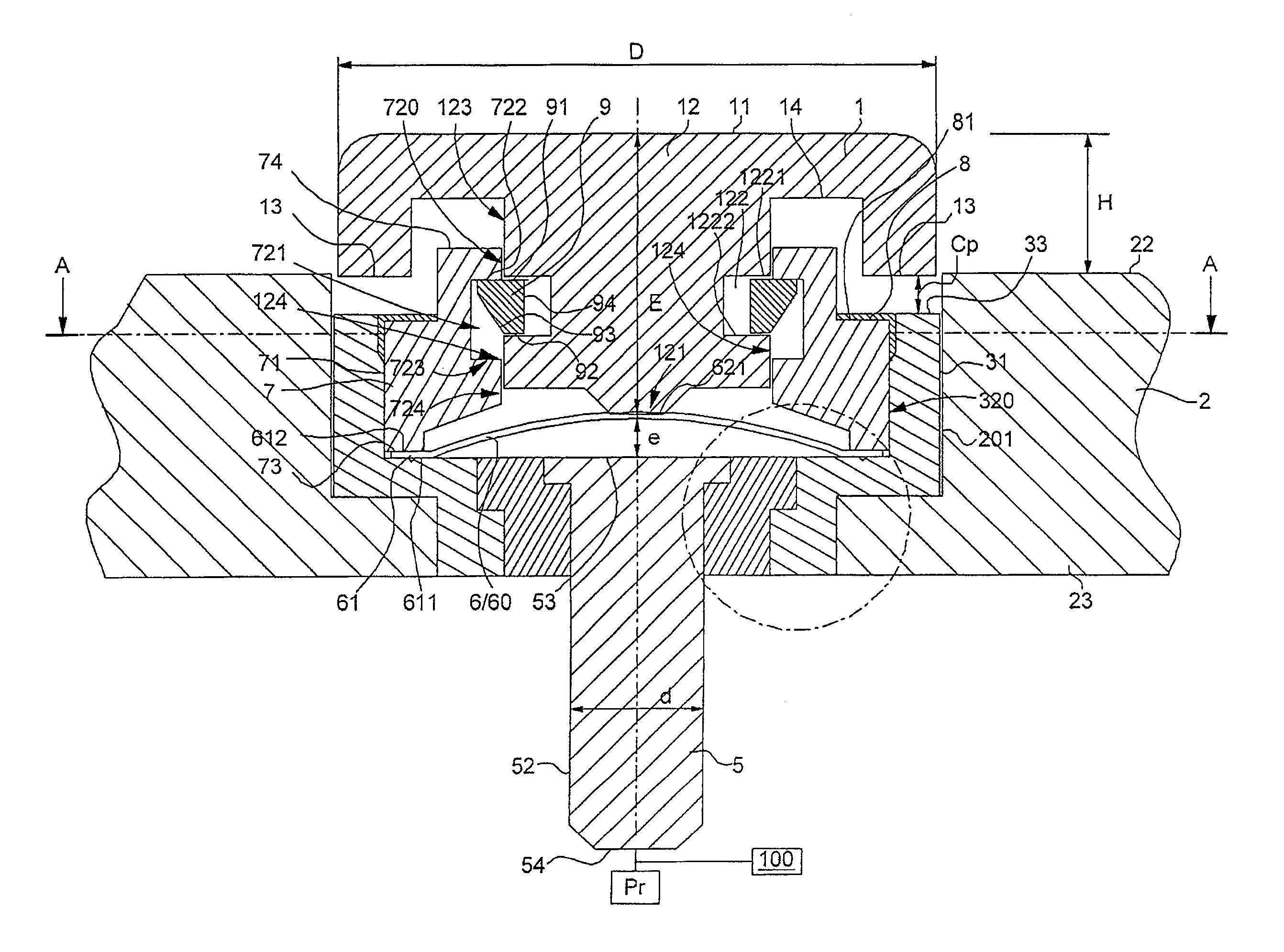Waterproof watch pushbutton
a pushbutton and watch technology, applied in the field of waterproof pushbutton for watch, can solve the problems of inconvenient use, unsuitable use, sealing, etc., and achieve the effect of ensuring reliability of engagement under water, effective activation, and reducing travel
- Summary
- Abstract
- Description
- Claims
- Application Information
AI Technical Summary
Benefits of technology
Problems solved by technology
Method used
Image
Examples
Embodiment Construction
[0019]The following FIGS. 1A, 1B and 1C show two different views respectively in section and in plan view of a pushbutton according to a preferred embodiment of the invention, in which the pushbutton head 1 projects slightly out of the centrepart 2 of the watch when the pushbutton is in the resting position Pr. According to this preferred embodiment the pushbutton can be assembled in modular fashion outside the centrepart 2 before being inserted into a through hole 20 of the centrepart 2 illustrated in FIG. 1D. FIG. 1B is simply an enlargement of FIG. 1A in the area of the assembly of different parts. Since this FIG. 1B was introduced for reasons of legibility in order to add thereto references relating to the different pieces illustrated, these two figures will be referred to in combination in the following for specification of the references of the pieces described in the description.
[0020]As can be seen from the sectional view in FIG. 1A, the pushbutton head 1 comprises an upper ...
PUM
 Login to View More
Login to View More Abstract
Description
Claims
Application Information
 Login to View More
Login to View More - R&D
- Intellectual Property
- Life Sciences
- Materials
- Tech Scout
- Unparalleled Data Quality
- Higher Quality Content
- 60% Fewer Hallucinations
Browse by: Latest US Patents, China's latest patents, Technical Efficacy Thesaurus, Application Domain, Technology Topic, Popular Technical Reports.
© 2025 PatSnap. All rights reserved.Legal|Privacy policy|Modern Slavery Act Transparency Statement|Sitemap|About US| Contact US: help@patsnap.com



